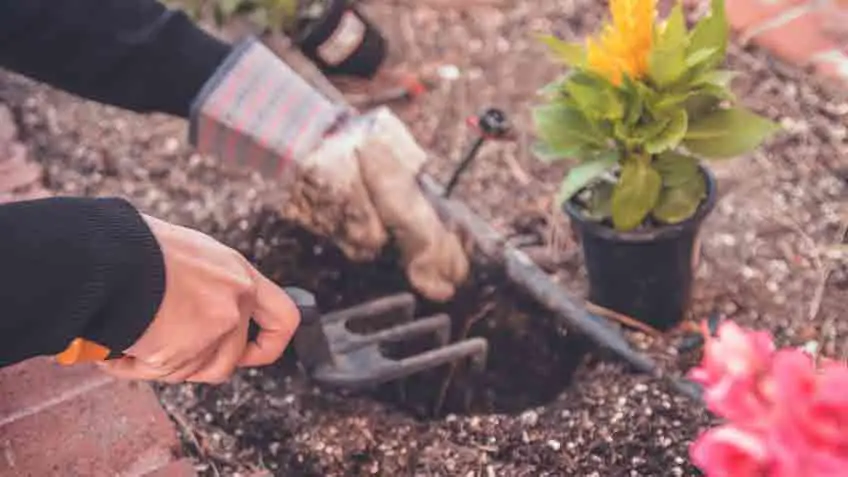It is essential to start planting flowers at the right time! But how would you know what is the right time to start planting flowers? In order to sort out that hassle for you, we have come up with a detailed write-up to assist you to find when to start growing in your area.
It highly depends on whether you are going to plant perennial, annual, or bulb flowers. Some types are known as frost-sensitive, which means that such plants won’t survive under the freezing temperature.
As numerous nursery workers know, there’s a typical guideline that encourages them to begin planting flowers. However, late winter isn’t the best and ideal opportunity to start planting flowers and vegetables. Regarding the right time for growing flowers or whatever else, what is most important is your specific region’s last frost date.
When Do You Start Planting Flowers
By and large, annuals, perennials, and bulbs all have various degrees of solidness. As such, some fill well in chilly climates, and some seem challenging to fill in conditions while others need the perfect daylight and heat. No matter how hard the flower is, you can grow them anywhere when there is suitable weather and soil conditions. When it comes to half-hardy flowers, wait for three weeks before the last frost, and for delicate blossoms, plant whenever there’s no way of frost for the entire season.
Begin With The Last Frost Date
Before planting flowers, you first need to study your region’s frost date. Vegetable Planting Calendar depends on frost date to decide whether plants will sustain under environmental conditions as young plants are more vulnerable to a freeze. The National Climatic Center Website has frost data for all states, so before moving to the next step, you need to study their guidelines to make a decent beginning profoundly. At that point, you should investigate the specific flowers you wish to place in your nursery. Then, decide when to plant as it is highly dependent on the frost data you found from the Climatic Center Website.
When To Plant Perennial Flowers
As the name shows, the perennial plants are short-lived plants, which means that they come with the capability to only survive during spring and summer. When the winter comes, they go back to the ground and die. However, their roots endure underground and produce new foliage when there is sufficient sunlight and heat. As a result, most perennials will sprout around the same time they are planted, while others, especially those planted later, will have to invest energy to establish their roots.
Perfect Time For Seeding
Some perennials can be pretty problematic to begin from seed; however, most are genuinely simple to develop and make for a cheap way of topping off another bloom bed. When it comes to roots some will require a time of cold temperatures before they will grow and may likewise set aside a more drawn-out effort to develop. It can take up to 3 weeks for germination, and that is not surprising. So they ought to be begun sooner than others. Adhere to the guidelines provided on your seed bag.
Time Perennials Take To Grow
Numerous perennials require 8-10 weeks to arrive at a decent stage to relocate them on or after the last frost. Among them are Anise hyssop, catmint, columbine, coreopsis, echinacea, gaillardia, helianthus, hollyhock, monarda, thyme, and yarrow. On the other hand, Rudbeckia and violas are robust and can go out in the nursery two weeks before the frost. Enduring hibiscus, then again, demands to stand by one fourteen days after the ice-free date has passed.
Other perennial plants, including Daisies, delphinium, and dianthus, ought to be begun 10-12 weeks ahead and can be planted out one fourteen days before the ice-free date. Whereas Asclepias, foxglove, heliopsis, and phlox require 10-12 weeks, however, need to delay until after the last frost to be relocated.
Yearly Flowers
Yearly plants or commonly known as annual plants grow, bloom, and make seeds in a single season. When winter comes, the plant passes on, depending on its origins to grow in the accompanying spring. Along these lines, most yearly blossoms are not difficult to develop from seed, requiring around two months to build to a transplantable size; however, the standard has exemptions consistently. Some sources may take more time to sprout, and slow-developing annuals should be begun before.
Time Yearly Plants Take To Grow
Expedient annuals, for example, sunflowers, might require just 3-4 weeks to arrive at a transplantable size. On the other hand, zinnias need a 4-multi week headstart and can be relocated outside when the last spring frost has passed. Then again, these quickly developing annuals can be straightforwardly planted in the nursery after the peril of frost has gone.
Bulb Plants
Planting bulbs is another lovely way to add seasonal pops of color to your garden. We divide bulbs into two main categories: spring-flowering bulbs and summer-flowering bulbs.
- Spring-flowering bulbs are those that bloom from early spring to early summer. Included in this category are flowers like tulips, crocuses, and daffodils.
- Summer-flowering bulbs are those that bloom from early summer to early fall. Included in this category are flowers like gladiolus, dahlias, and cannas.
Wrap Up
Planting flowers demands some research and attention to acquire a flourishing garden look at the end. Each type has its characteristic, which enables it to grow under certain climatic conditions. We hope that our detailed write-up on planting flowers will help you find the perfect time to produce a stunning garden.


